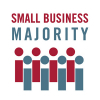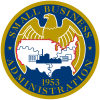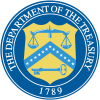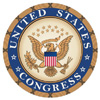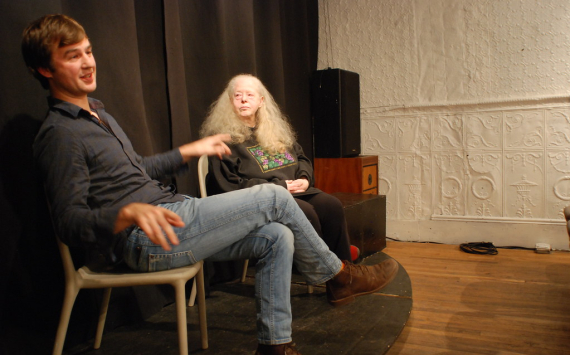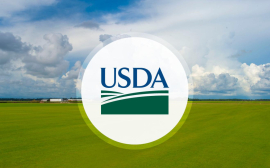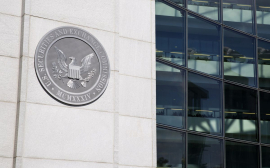
In April, when the federal government offered $349 billion in loans to small businesses reeling from government shutdown orders in the pandemic, the funding ran out in just 13 days, prompting Congress to swiftly approve a second round of $310 billion.
Small businesses have since grown more wary of taking the money.
As of Monday, more than $130 billion was left in the fund, known as the Paycheck Protection Program. Even more striking was the fact that on many days last month, more money was being returned than borrowed, according to data from the Small Business Administration, which is overseeing the program — highlighting its messy execution and confusing rules that deterred some small businesses from using the money.
Thousands of companies that got loans have sent the money back, according to lenders. For some owners, the program’s terms were too restrictive; for others, the criteria for loan forgiveness was too murky. Some public companies that received these loans returned them after a public outcry, and in the initial rush, some borrowers accidentally got duplicate loans that they, too, returned.
The amount of loans outstanding under the program dropped to $510.2 billion at the end of May, from $513.3 billion in the middle of the month, according to S.B.A. data. That meant about $3 billion had been canceled or returned, including at least $550 million from public companies. By Monday, the amount of approved loans had inched back up to $511.5 billion — indicating that changes Congress made to the program last week to make it less restrictive could be pushing more money out the door.
The Small Business Administration, which is relying on banks and other lenders to issue the loans, declined to say how many loans had been canceled.
The program’s chaotic execution has “chilled the willingness of many small businesses to even apply for loans during the second round of P.P.P. funding, and has caused many businesses to return disbursed loans out of fear of doing something wrong,” Tony Wilkinson, the chief executive of the National Association of Government Guaranteed Lenders, a trade group, said last week at a hearing of the Pandemic Response Accountability Committee, an oversight group.
The turn of events is notable for a signature program of Congress’s $2.2 trillion coronavirus relief package, which only a couple of months ago was caught in an intense borrowing frenzy by desperate business owners. After all, small businesses are still in distress. Even as states begin to reopen, millions of storefronts around the country remain shuttered and could go out of business.
On Wednesday last week, Congress moved to loosen the program’s rules and give businesses more flexibility in spending their aid, and President Trump signed the bill on Friday. The change was widely praised by small-businesses advocacy groups and will help many borrowers.
The amended rules could help the remaining $130 billion move faster. However, having the terms of their loans revised on the fly yet again — which has happened repeatedly since the program began in April — is a nightmare for borrowers as they struggle to salvage their companies.
“The boundaries move like a video game,” said Caren Griffin, the owner of Spa Universaire, a hotel spa in downtown Denver. Her business has been shut down since mid-March and won’t reopen until July, at the earliest.
Ms. Griffin was on the verge of returning her $66,272 loan because she didn’t think she would be able to use it within eight weeks, as the program originally specified. The new changes give her 24 weeks, allowing her more time to decide whether to use the money when — and if — she reopens.
She isn’t sure she will. Refitting her spa to comply with new safety guidelines will be expensive, and no one knows when customers will be willing to get high-touch services like massages and facials. Ms. Griffin, who is 63, wonders if she would be better off closing the business and retiring.
“I’m running through a dozen different scenarios for what our cash-flow structure might look like if we reopened with changes in our hours and services,” she said. “We won’t go back to normal. That’s clear.”
For many small businesses that depend on foot traffic, like restaurants and nail salons, even the more relaxed relief terms might not be enough.
“I cried the day I sent it back,” said Shelly Ross, the owner of Tales of the Kitty, a cat-sitting company in San Francisco, who recently gave up on using her $75,000 loan and returned the money. “I thought this would save my business, but I was worried about being financially ruined if it wasn’t forgiven, and no one could give me any real answers about that.”
Ms. Ross started Tales of the Kitty in 2003 and expanded it into a thriving venture with 14 employees and a packed schedule of 10,000 client visits a year. In March, her sales plummeted because of the pandemic, forcing her to lay people off.
To have their loans fully forgiven, companies must keep the same number of employees on the payroll as before the pandemic, at the same wages. That’s a hard bar to clear for business owners whose ventures remain shut. Ms. Ross expects her sales to stay slow at least through Thanksgiving.
The paycheck program was largely meant to keep workers off unemployment rolls by funneling money to their employers, and it made progress toward that goal. Job numbers released on Friday showed gains in industries that received small-business loans and suggested that the program had helped offset at least some of the economic damage caused by the shutdown.
More than 4.5 million companies, from solo gig workers and small restaurateurs to retailers and professional services firms with fewer than 500 employees, got help. For most, it was a lifeline.
But many lenders are ready to be done with the program. Even though the government will keep processing loans until June 30, Wells Fargo stopped taking new applications last month. So did many community banks, including OceanFirst, a regional bank in Toms River, N.J., that has lent $500 million to 3,000 businesses.
Requests had slowed to a trickle, said Christopher Maher, the bank’s chief executive. He cut off new lending because he wanted to pivot his employees toward the next major program challenge: loan forgiveness.
“It’s going to be much more difficult to work through the repayment calculations and documentation than it was to make these loans in the first place,” Mr. Maher said.
The paperwork for proving that a loan complied with the terms is extensive and complicated; the Small Business Administration’s 11-page application for loan forgiveness is much more intricate than the loan application itself. Any portion that is not forgiven becomes a debt that must be repaid within five years. (The initial term was two years.)
The lack of clarity around loan forgiveness cemented Ms. Ross’s decision to return her loan. She considered simply paying her workers to stay home for eight weeks, which the program allows, but she worried about having to lay them off again when the money ran out.
Then, the week after she got her loan, the Small Business Administration released its forgiveness application. Ms. Ross tried to run the calculations for her business, but her staff is mostly part-time employees with variable hours. She consulted her accountant, her bookkeeper, a lawyer and her lender to figure out how much of her loan would qualify for elimination.
None could give her definitive answers. Scared she would be stuck with a big debt, Ms. Ross sent the money back.
Many trade groups for lenders and small businesses, such as the Consumer Bankers Association and the Small Business Majority, have asked for blanket forgiveness for loans of less than $150,000. So far, the Small Business Administration and the Treasury Department — which is calling the shots on most of the paycheck program’s terms — have not indicated any willingness to grant that.
Adam Markowitz, an accountant in Florida who is working with dozens of clients who took paycheck loans, said he was unable to figure out whether his own loan, for $34,500, would be fully forgiven. He’s waiting for further guidance on the many unresolved technical questions.
“The only consistent thing about this program is that it’s been a mess at every stage,” he said.
The post $130 Billion in Small Business Aid Still Hasn’t Been Used appeared first on New York Times.
Source: https://dnyuz.com/2020/06/10/130-billion-in-small-business-aid-still-hasnt-been-used/



